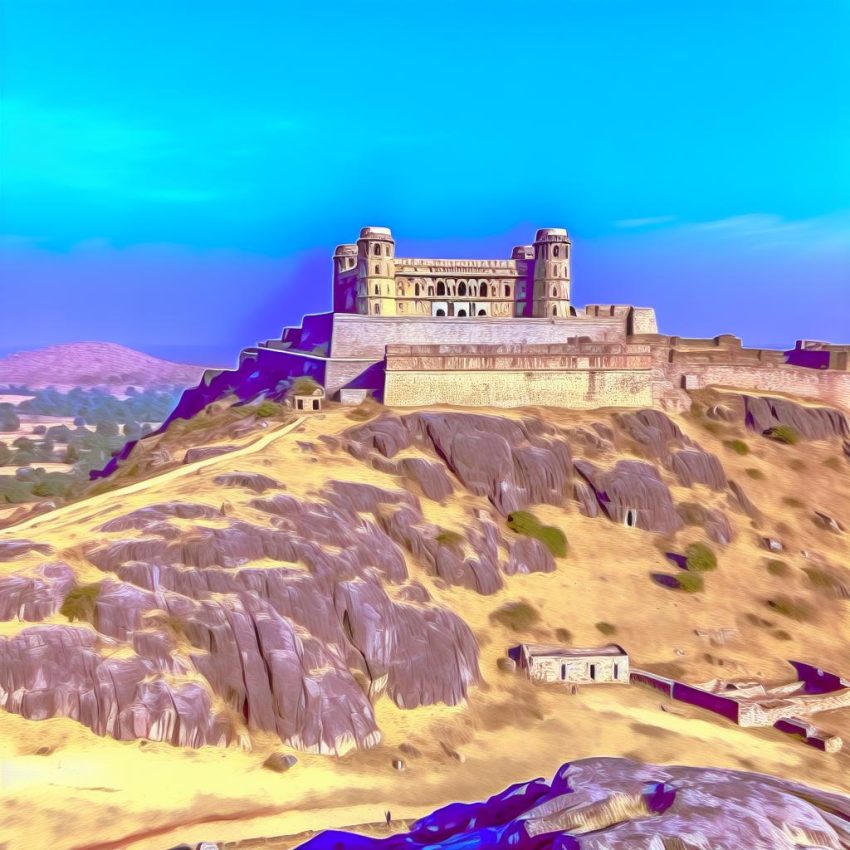Introduction
Located in the Chitradurga district of Karnataka, India, Chitradurga Fort stands as a monumental testament to the region’s rich history and architectural brilliance. This ancient fort exemplifies the strategic military architecture that was a hallmark of its time, reflecting a confluence of cultural and historical influences. Spanning a significant expanse, the fort not only serves as a standing record of the past but also continues to capture the imagination of visitors today with its majestic presence and storied past.
Historical Background
Chitradurga Fort’s history is rich and varied, offering insights into the layers of cultural and political changes over centuries. The origins of the fort can be traced back as far as the 10th century, indicating its long-standing significance in the region. Its substantial development took place between the 15th and 18th centuries, primarily under the tutelage of the Nayakas of Chitradurga and the rulers of the Vijayanagara Empire. These rulers enhanced the fort’s structure and reinforced its tactical significance in the region. As time progressed, the fort witnessed a change in power in the 18th century when Hyder Ali and his son, Tipu Sultan, took control of this formidable stronghold. Each period of control brought about modifications and additions that contributed to the fort’s remarkable characteristics.
Architectural Features
Chitradurga Fort extends over approximately 1,500 acres, making it one of the most expansive forts in South India. Situated atop granite hills, the fort exemplifies a brilliant piece of local defense architecture. Its heavily fortified walls and strategically placed bastions were designed to offer resistance and control over the area throughout its occupied history. The various architectural features of the fort are not only interesting to observe but also tell tales of the strategic and defense-focused mindset of its creators.
Defense Mechanisms: One of the most fascinating aspects of its architecture is the employment of unique and effective defense strategies. The fort’s design incorporates false doors, which were intended to confuse and divert invaders. Steep cliffs provided natural defense barriers, making it difficult for enemies to breach. The watchtowers scattered throughout the fort were critical for maintaining surveillance over the area, ensuring early warning of any approaching threats.
Gates and Entrances: Another significant feature of Chitradurga Fort is its seven concentric fortification walls. These walls are complemented by multiple gateways, each adorned with detailed carvings that narrate the tales of both mythological and historical significance. The robust construction of these gateways represents the strength and durability required to protect the fort from outside invasions.
Significant Structures Within the Fort
The interior of Chitradurga Fort is as intriguing as its outer structure, featuring a variety of ancient temples, archaeological remnants, and water management systems. These structures not only signify the advanced planning and architectural acumen of its builders but also highlight the cultural and spiritual devotion of that era.
Murugha Matha: Among the religious and spiritual edifices within the fort, Murugha Matha holds a place of importance. This site continues to attract visitors due to its spiritual significance, offering a serene environment for contemplation and connection with the fort’s historical ethos.
Hydraulic Systems: The fort’s builders displayed remarkable ingenuity in water management by developing sophisticated rainwater harvesting systems. These systems ensured a consistent and reliable source of water, even during arid periods. The ability to harness and store water within the fort was a critical factor in maintaining sustainability and self-sufficiency, especially during sieges.
The Legacy of Onake Obavva
A unique and captivating narrative within the history of Chitradurga Fort is the legend of Onake Obavva. During the reign of Madakari Nayaka, Onake Obavva became an icon of courage and resilience. As the story goes, she defended the fort single-handedly against the forces of Hyder Ali using only a pestle, known locally as an “onake.” Her act of bravery and quick-thinking left a lasting impression on the annals of local folklore, making her a celebrated figure in regional history. Her story encapsulates the spirit of resistance and valor that forms an integral part of the fort’s legacy.
Preservation and Tourism
Today, Chitradurga Fort is preserved under the aegis of the Archaeological Survey of India. It stands out as a prominent tourist destination, drawing visitors from all over the world who are captivated by its historical importance and architectural beauty. The fort provides an educational experience for all who visit, offering insights into historical military strategies and regional heritage.
The fort’s structures have been maintained to ensure accessibility for tourists, historians, and architecture enthusiasts alike. For those interested in visiting Chitradurga Fort, additional resources and visiting guidelines are available on several travel websites and government portals. The fort remains a living educational resource, continually inspiring awe and reverence in those who explore its ancient confines.
In conclusion, Chitradurga Fort is a remarkable historical and architectural marvel that offers a window into the past. Its preservation serves as a reminder of the rich cultural heritage and strategic prowess of ancient India. This fort’s legacy continues to be an integral part of the area’s identity, ensuring that its stories, legends, and grandeur are shared with generations to come.
